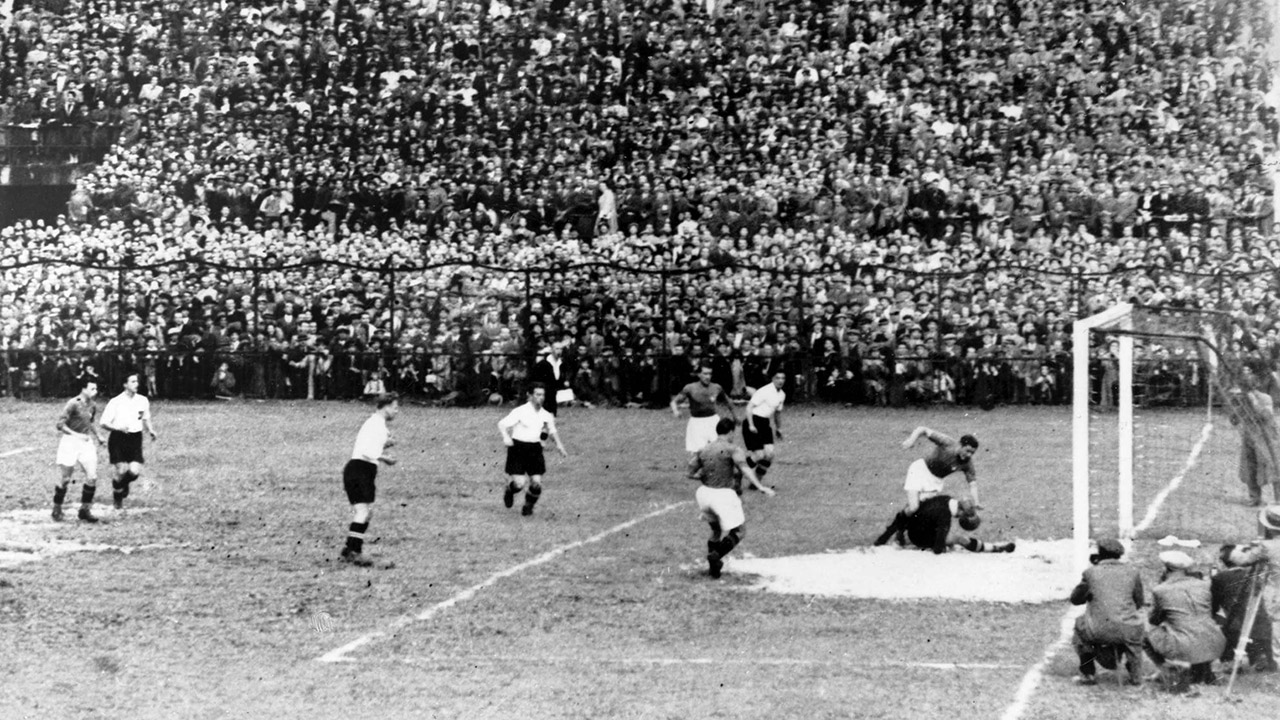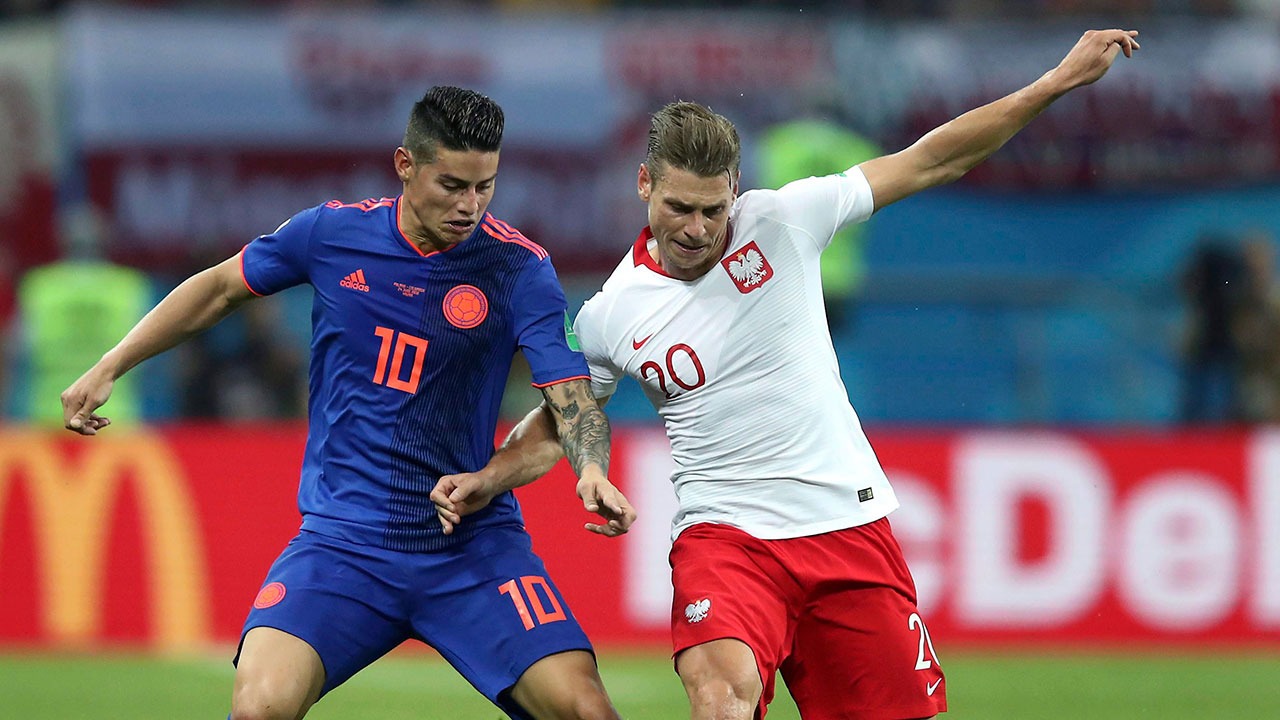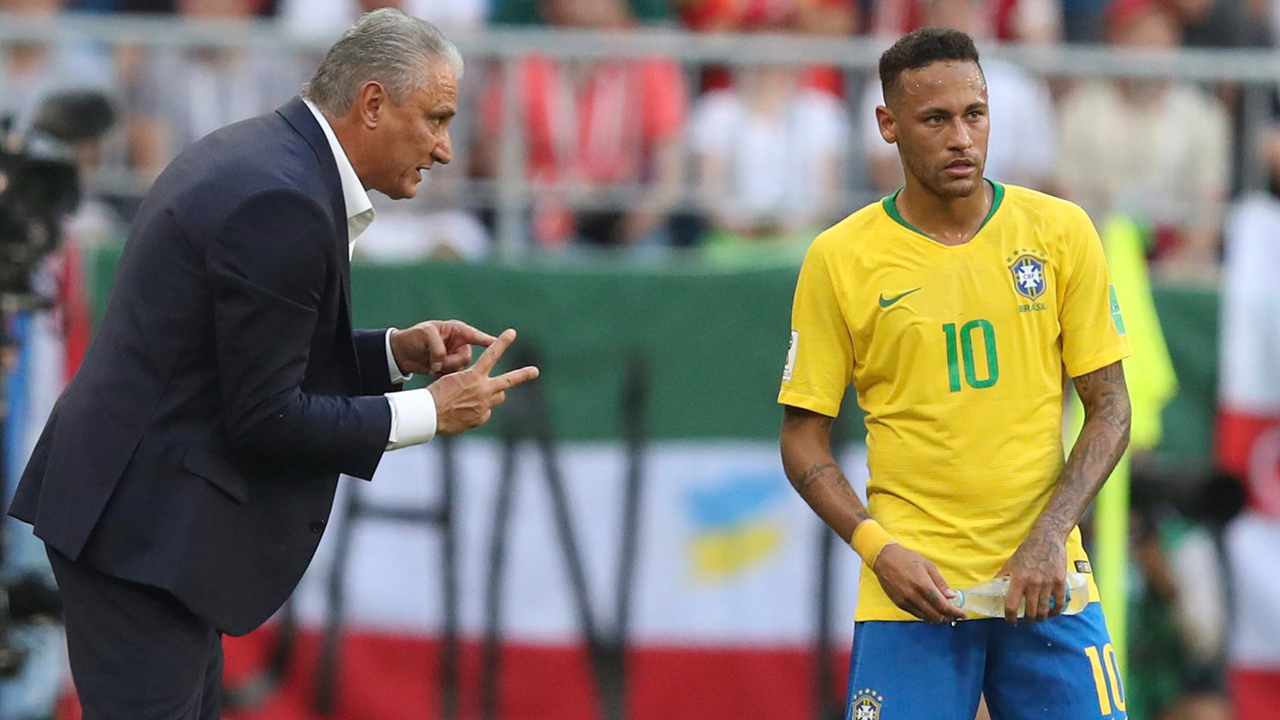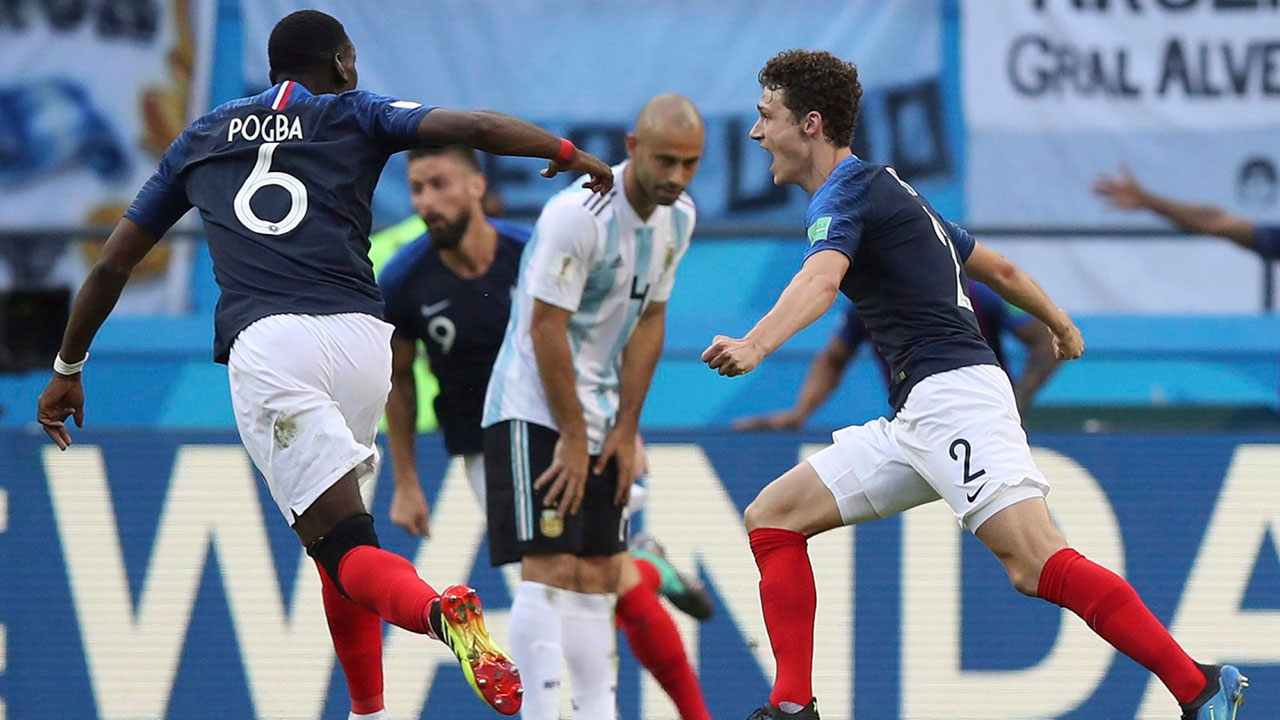Buoyed by the hometown crowds — and possibly the undue influence of dictator Benito Mussolini — Italy won the first of its four World Cups in 1934, defeating Czechoslovakia in the final in Rome.
THE MAIN STORY
The 1934 World Cup mixed sports and politics, as it was staged under the Fascist rule of Benito Mussolini in Italy.
A regular spectator at Rome’s Nazionale stadium during the second World Cup, Il Duce made the tournament his Berlin Olympics, using the competition to showcase Italy and trumpet his Fascist regime to the world, while at the same time uniting the country behind the national team.
The Italian dictator apparently wasn’t shy about intimidating the match officials. Referee Ivan Eklind was said to have met with Mussolini prior to taking charge of Italy’s semifinal and final games, leading many to believe the Swede made several disputed calls in the Italians’ favour.
[snippet id=3758859]
TOURNAMENT FORMAT
Although there was an even number of teams (16), there was no opening group stage. Instead, the tournament was a knockout competition from the start: if you lost, you went home. Games went to extra time if the teams were tied after 90 minutes, and a replay (another game) if they were tied after 120 minutes. There were no penalty shootouts.
THE FINAL
All of Italy stood still on June 10 when Mussolini’s Azzurri and Czechoslovakia clashed in the final in Rome. It was a matchup that pitted teams with different styles: the Czechs displaying great skill and style with their short-passing game, and the Italians showcasing their stamina and strength. Both sides launched countless attacks, only to be thwarted. Finally, in the 70th minute came the breakthrough — winger Antonin Puc took a corner kick, and when the ball found its way back to him, he hammered it past Italian goalkeeper Giampiero Combi to make it 1-0 for the Czechs.
Czechoslovakia should have put the game away minutes later, but Jiri Sobotka squandered a scoring chance and Frantisek Svoboda’s shot slammed against the post. The Czechs paid for their poor finishing. With nine minutes remaining in regulation, Argentine-born Enrico Guaita fed a pass to fellow Argentine Raimundo Orsi. The winger split the defence and beat Czech goalkeeper Frantisek Planicka with a right-footed curler after feigning with his left to tie it 1-1.
Ninety minutes of furious action left both teams exhausted. Italy, though, was in far more trouble as the game went into extra time. Forward Angelo Schiavio looked tired in the waning minutes of regulation, while Giuseppe Meazza was limping. And yet, it was the Italians who broke the deadlock, conjuring a goal of pure magic in the 95th minute. The Czechs did not bother to mark the injured Meazza, and he made them rue that decision when he crossed to Guaita from the wing. Guaita passed to the tired Schiavio, who found open space after rounding Czech defender Josef Ctyroky and fired past Planicka.
QUICK FACTS
Number of participating teams: 16
Top scorer: Czechoslovakia’s Oldrich Nejedly (5 goals)
Number of games: 17
Total goals scored: 70
Average goals per game: 4.12
Highest scoring game: Italy’s 7-1 win over the U.S. on May 27
Total attendance: 395,000
Average attendance: 23,235
MAN OF THE TOURNAMENT
Giuseppe Meazza. He wasn’t even Italy’s top scorer (Angelo Schiavio scored four times), but there was no doubting Meazza’s influence. The Inter Milan forward scored two goals, including the winner against Spain in the quarterfinals. Playing injured in the final, he set up Schiavio’s game-clincher against Czechoslovakia in extra time.
MATCH OF THE TOURNAMENT
Italy’s 2-1 victory over Czechoslovakia in the final. A frantic opening 90 minutes saw the score even at 1-1. Both teams were exhausted, but Italy, supported by the Rome crowd, won in extra time on Angelo Schiavio’s marvellous goal.
POZZO MAKES HIS MARK
Manager Vittorio Pozzo led Italy to two World Cups (1934 and 1938) and to the gold medal at the 1936 Berlin Olympics. Known as Il Vecchio Maestro — the Old Master, Pozzo was an iron-fisted authoritarian who demanded complete and utter commitment from his players. Pozzo was renowned for his tactical acumen, and is credited with establishing the twin pillars of Italian soccer: defensive strength and refined precision.
THE ORUINDI
Before FIFA tightened the rules, players were able to represent more than one country in the World Cup. During the 1930s, several of Argentina’s biggest stars played in Serie A. Vittorio Pozzo seized the opportunity and extended invitations to Raimundo Orsi, Enrique Guaita and Luis Monti — all born in Argentina, but with Italian roots — to play for the Azzurri in the 1934 World Cup. Although criticized by some, Pozzo defended his use of the oriundi (an Italian word to describe foreign-born national team members of Italian ancestry) by famously saying, “If they can die for Italy, they can play for Italy.” It proved a wise decision: Orsi scored three times (including the tying goal in the final), Guaita netted the winner in the semifinals, and Monti proved a defensive dynamo in midfield.
NO INVITATIONS THIS TIME
The inaugural World Cup proved to be such a success that invitations were not needed this time around. Thirty-two nations wanted to compete in Italy, so FIFA convened a qualifying round to reduce the field of aspirants to 16 teams.
HOW COME NO URUGUAY?
Soccer relations between South America and Europe were fragile at the time. Still upset by being snubbed four years earlier by the European teams, world champion Uruguay declined to participate, while Brazil and Argentina did not send its best players, choosing instead to field “B” teams. Uruguay remains the only reigning champion in World Cup history not to defend its title.
SPREADING THE LOVE
Unlike four years earlier when all the matches were played in Montevideo, games at the 1934 World Cup were spread out across eight cities: Naples, Genoa, Bologna, Milan, Trieste, Florence, Turin and Rome.
STARTING OFF WITH A BANG
The World Cup kicked off on May 27 with a bang. Italy crushed the United States 7-1 in Rome. Hungary defeated Egypt, the first African nation to compete at the World Cup, in Naples. Brazil and Argentina retreated home, 13,000 kilometres across the Atlantic, after losing to Spain and Sweden, respectively.
A TWO-DAY QUARTERFINAL
Italy battled to a 1-1 draw with Spain in Florence under the hot Tuscan sun on May 31. Extra time settled nothing, so they replayed the game the next day. Both teams juggled their starting lineups — Italy made five changes, Spain seven. Forward Giuseppe Meazza’s goal in the 12th minute stood up as the winner, and Italy booked a spot in the semifinals.
QUIRKY FACTS
• Luis Monti is the only player to have played in two World Cup final games for two different countries. The tough-tackling midfielder appeared for Argentina in 1930 against Uruguay, and suited up for Italy in 1934 against Czechoslovakia.
• Even though they were the hosts, Italy still had to qualify for the 1934 World Cup. The Italians thrashed Greece 4-0 in Milan in the first leg of a two-game playoff. The second game never took place as the Greeks withdrew.
• The soccer stadium currently used by both AC Milan and Inter Milan is called Stadio Giuseppe Meazza, named after the Italian national team legend.
• The U.S. qualified for the 1934 World Cup by defeating Mexico 4-2 in Rome, a mere three days before the first game of the tournament.









